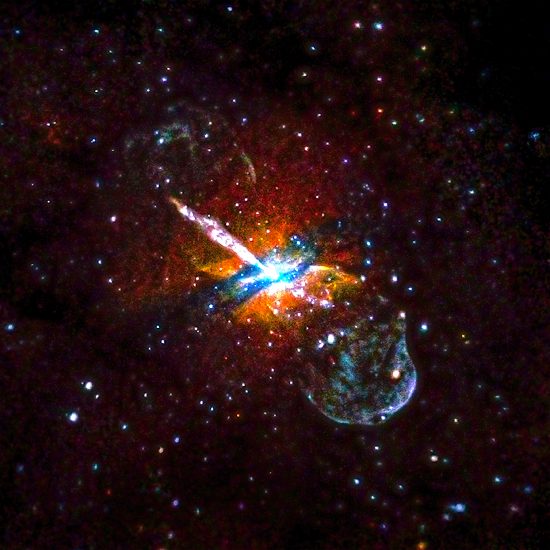
December 16, 2020
Black hole physics remains questionable.
“One thing that I’m sure of is the real pleasure of life – it’s not being known, it’s not having your own jet plane, it’s not having a mansion. The pleasure is to learn something.”
— Francis Ford Coppola
According to a recent press release, collimated jets result from matter falling into different gravity fields surrounding a black hole. As stellar matter orbits closer, it is said to accelerate, causing violent collisions among the jet particles, generating X-rays and other high frequency radiation. Eventually, somehow, the acceleration creates a powerful filamentary jet.
The way modern astronomy treats observations and theories is illustrated by one of the team, physics Ph.D candidate Adam Leah Harvey. Harvey identifies as an “observational astronomer,” but adds, “I’m really more of a data scientist and a statistician than I am a physicist.”
How those words resonate with Electric Universe proponents. They echo the sad state of affairs witnessed by Hannes Alfvén in the early days of plasma research:
“…several of the basic concepts on which the theories are founded, are not applicable to the condition prevailing in cosmos. They are ‘generally accepted’ by most theoreticians, they are developed with the most sophisticated mathematical methods and it is only the plasma itself which does not ‘understand’, how beautiful the theories are and absolutely refuses to obey them.”
Astronomers often observe ionized particles erupting from various celestial objects, especially black holes. Explaining them is a difficult task. As mentioned, the prevailing theory is that dust and gas are energized by collisions as they orbit within a black hole’s accretion disk. Gas and dust grains heating up as they orbit does not address the jets. There is only one force that can hold a matter stream together over long distances and that is electromagnetism. The only way to generate that electromagnetic confinement is with electricity.
Failing to realize that electric charge creates magnetic fields has led many physicists to model plasma in space without considering electricity. Nobel laureate Hannes Alfvén further noted that plasma is “too complicated and awkward” for the tastes of mathematicians. It is “not at all suited for mathematically elegant theories” and requires laboratory experiments. Mr. Harvey and his team should take that advice to heart. Especially from one of the greatest physicists to ever live.
Alfvén observed that the plasma Universe had become “…the playground of theoreticians who have never seen a plasma in a laboratory. Many of them still believe in formulae which we know from laboratory experiments to be wrong”.
As previously written, stars are nodes in electric circuits. Their electromagnetic energy could be stored in the equatorial current sheets surrounding them until some trigger event causes them to switch into a polar discharge. The electric jet could receive its energy from a natural particle-accelerator: a plasma double layer with a strong electric field. Toroidal magnetic fields would form because of the polar plasma discharge, confining it into a narrow channel.
Electric Universe advocate Wal Thornhill wrote:
“Plasma cosmology has one great advantage in that the phenomena are scaleable from galaxies down to stars, planets and the lab. So it is possible to bring cosmology back down to earth and do away with invisible dark matter, neutron stars, black holes and the Big Bang. They are unnecessary when the electric force is a thousand trillion trillion trillion times stronger than gravity!”
Stephen Smith












